mobile View, to the German Version tap the flag


- Republic of Mongolia
- presidial republic
- own name: Mongol Uls
• Flag
• Historical Flags
• Meaning/Origin of the Flag
• Coat of Arms
• Meaning/Origin of the Coat of Arms
• Aircraft Roundel
• Map
• Numbers and Facts
• History
• Origin of the Country's Name
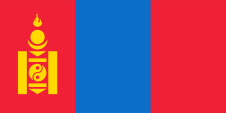
National flag,
ratio = 1:2,
Source, by: for details, Public domain,
via Wikimedia Commons,
Wikipedia (EN)






Variants of the 14th to 17th centuries,
Source, by: Flags of the World
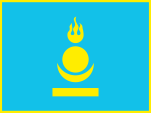

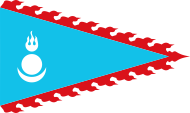
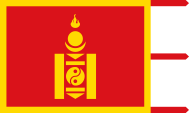
1911–1924,
National flag of the Khanate of Mongolia,
Source, by: Flags of the World




1911–1924,
Flag of the Bogd Khan,
Source: Joins2003, CC BY-SA 4.0,
via Wikimedia Commons, Flags of the World
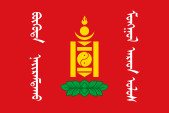
1924–1940,
National flag of the Mongolian People's Republic,
ratio = 2:3,
Source: Havsjö, CC BY-SA 4.0,
via Wikimedia Commons, Wikipedia (EN)



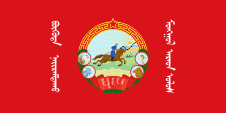
1940–1945,
National flag of the Mongolian People's Republic,
ratio = 1:2,
Source: Ericmetro, CC BY-SA 4.0,
via Wikimedia Commons, Wikipedia (EN)



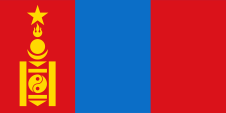
1945–1992,
National flag of the Mongolian People's Republic,
ratio = 1:2,
Source: Drawn by User:latebird, Public domain,
via Wikimedia Commons, Wikipedia (EN)




Unconfirmed variants without assignment:
Source, by: Flags of the World, Flaggenbuch 1939
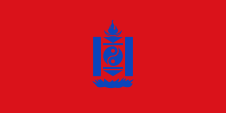
1924–1940,
National flag of the Mongolian People's Republic



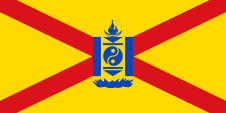
1924–1940,
Merchant flag of the Mongolian People's Republic




The flag of Mongolia shows three vertical stripes in red, blue and red, as soon as in the red stripe at the leech a yellow emblem. Red symbolizes the socialism, pale blue the heaven. Blue is the colour of the Mongolian race too. The emblem is the ancient Mongolian Soyombo-Symbol which crowned until 1992 from the yellow star of the communism. The flag was adoped in its today’s type on 10th of June in 1945 and confirmed officially on 12th of February in 1992 after the delete of the yellow star. The colours of the flag are laid down since July 2011. They are given as follows: Blue = Pantone 300, Medium Yellow = ca. Pantone 109, Red = Pantone 032. The mordern Soyombo-Symbol is a Mongol symbol of Buddhist worldview and should have been created in the 17th century by Dshanbadshor an ostensible reincarnation of Buddha. It shows at the top a fire with three flames (past, present, future), beneath the sun (Mother of the Mongols) and the moon (father of the Mongols). In the underneath part stand between two vertical bars (symbol for strength) two triangles (spearheads), two horizontal bars (symbols for the flat country) and the Ying-Yang-Symbol. Those stands for a dualistic worldview. The Mongols used to be almost all nomads. Even if they conquered a huge empire, they had a different idea of the state. The Great Khan was the supreme general and the army was constantly on the move. So there were hardly any permanent residences. The state was where the army was. In this way, it was not a matter of marking off a territory with flags, but at most indicating the presence of the Great Khan, or equipping the army with standards as field symbols. These varied greatly in design, but were mostly blue, often triangular with a red border, or had three narrow red extensions. In the middle there were images of birds or horses and also the Soyombo symbol, consisting only of moon, sun and fire. After becoming dependent on China in the 17th century, Mongolia regained its independence from China during the 1911 Chinese Revolution, when the religious leader of Lamaist Buddhism, Ngawang Lobsang, was appointed Bogd Khan. Chinese troops invaded in 1918 and the country was reconnected to China in 1919. In 1920, Russian troops under Baron Ungern-Sternberg invaded, followed in 1921 by Soviet Russian troops, enabling the communists to seize power. Henceforth, the flags of Mongolia were influenced by communist symbolism.
Source:
Die Welt der Flaggen,
Flaggen Wappen Hymnen,
Flaggen und Coat of arms of the Welt,
Volker Preuß

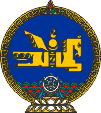
since 1992,
Coat of arms of the Republic of Mongolia,
Source: Sodacan, Public domain, via Wikimedia Commons
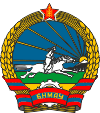
1945–1992,
Coat of arms of the People's Republic of Mongolia,
Source: Corel Draw 4

The today’s coat of arms of Mongolia is round and sows on a dark blue golden bordered disk a stylizeed golden winged horse combined with the Soyombo-Symbol. In the top three gems (past, presence, future) and in the lower part a wheel (Buddhistic symbol) with a blue silk shawl in front of the background of many rising suns. Below the shield a pedestal from golden lotus blossoms. The until 1992 used coat of arms of the people’s republic was introduced in 1960. It was round and showed a worker on a horse which rides in front of a Mongolian scenery towards the sun (the shining future of communism). In the top the red golden surrounded five-pointed star of the communism with a golden Soyombo in the middle. In the lower part a sprocket as allegory of the expected industrialization. All this was surrounded by a garland off grain ears which are bonded by a ribbon in the colours of the country. The ribbon carryed vive golden Cyrillic letters (The Cyrillic writing was valid in Mongolia between 1946 and 1991. Nowadays they use again the Uigurian alphabet). The letters were: "BNMAU", the initial letters of the then name of the country: "Buegd Nairamdach Mongol Ard Uls" → "People’s Republic of Mongolei".
Source:
Die Welt der Flaggen,
Flaggen Wappen Hymnen,
Flaggen und Coat of arms of the Welt,
Wikipedia (D)


since 1992,
Aircraft Roundel,
Source, by: Wikipedia (EN)
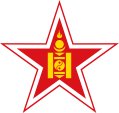
1925(?)–1992,
Aircraft Roundel,
Source, by: Wikipedia (EN)

Location:
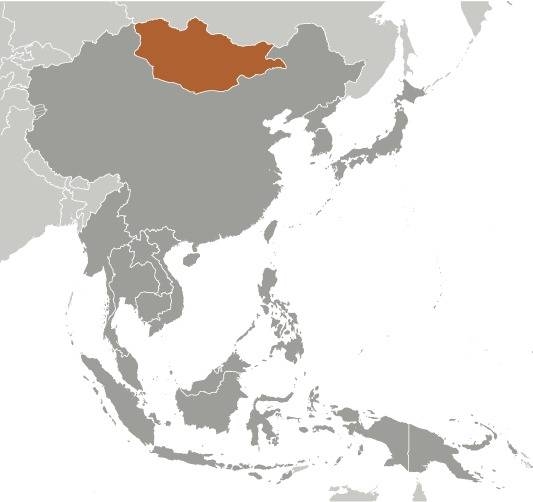
Source: CIA World Factbook
Map of the country:
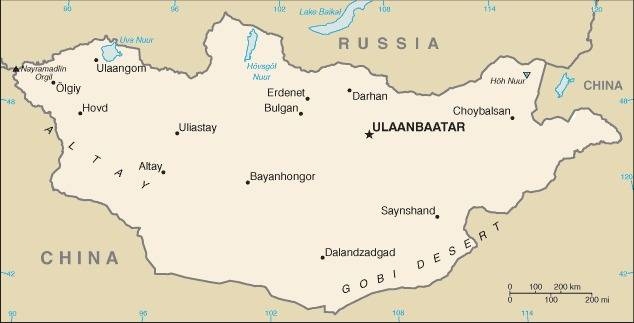
Source: CIA World Factbook

Area: 603.906 square miles
Inhabitants: 3.300.000 (2020), thereof 82% Mongolians, 4% Kazakhs, 3% Buryats and Tuvinians, furthermore Chinese and Russians
Religions: 54% Buddhist, 19% Animist, 5% Muslim, 2% Christian, 3% Non-Religious
Density of Population: 5,4 inh./sq.mi.
Capital: Ulan-Bator (Name to 1921: Urga), 1.499.140 inh. (2020)
official Language: Mongolian
other Languages: Kazakh, English, Russian
Currency: Tugrik (MNT, T, Tug) = 100 Mongo
Time Zone: GMT + 7 h to + 8 h
Source:
Wikipedia (D)

13th century · Dschingis Khan unifys the Mongol nomad tribes and submits Northern Asia and Eastern Europe
1241 · decay of the Mongol Empire
1271 · Kublai Khan conquers China and establishes the Mongol Yuan-Dynasty
1368 · the Yuan-Dynasty becomes banished out of China, China gets independent from Mongolia, partition of Mongolia in Interior Mongolia and Outer Mongolia, the Inner Mongolia remains at China
1369 · Timur submits Middle Asia, Mideast Asia, Persia and partially Little Asia (Anatolia)
1691 · the Outer Mongolia becomes a vassal state of Chinas
1911 · revolution in China, the Outer Mongolia declares itself for independet, chief of state becomes Bogd Khan (Chief of the Lamaistic religion in Mongolia)
1918 · invasion of Chinese troops
1919 · the Outer Mongolia becomes annexed by China
1920 · invasion of Russian troops under Baron Ungern-Sternberg
1921 · invasion of Soviet-Russian troops
11th of July 1921 · seizure of power by the communists, alliance with Soviet-Russia
1924 · rename in Mongolian People’s Republic, new constitution
1940 · new constitution
1946 · China recognizes the independence of Mongolia
1960 · new constitution
1963 · border convention between China and Mongolia
1989 · democratization, withdrawal of the Soviet troops
1992 · new constitution
Source:
Atlas zur Geschichte,
World Statesmen,
Wikipedia (D)

The name "Mongolia" is to translate as "Land of the Brave" because the Mongol word "mong" means "courageous".
Source: Handbuch der geographischen Namen


![]()




















